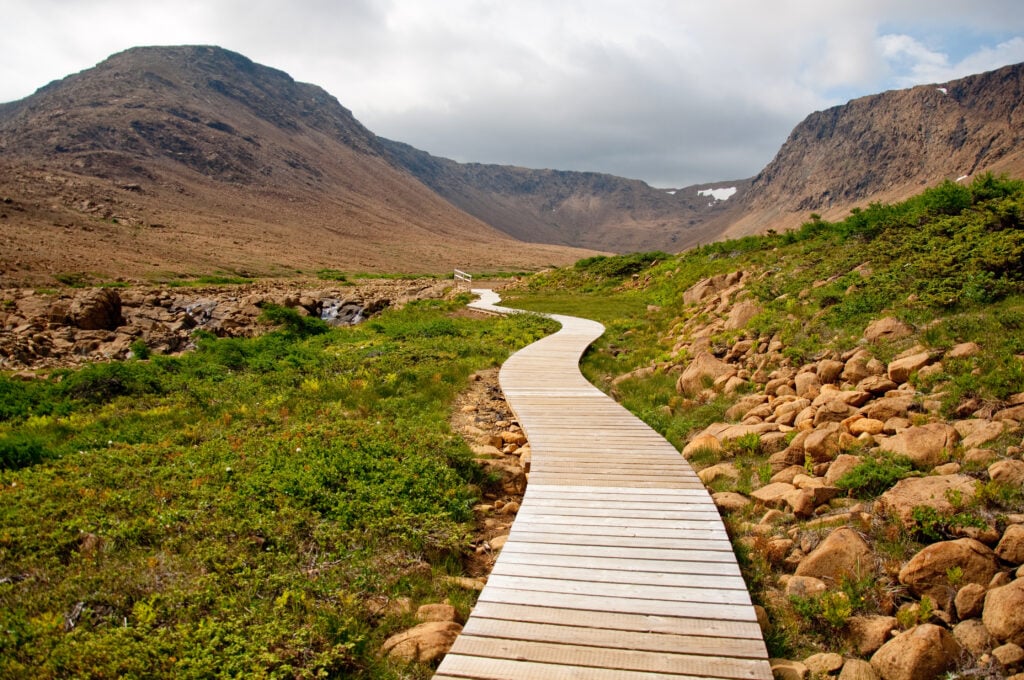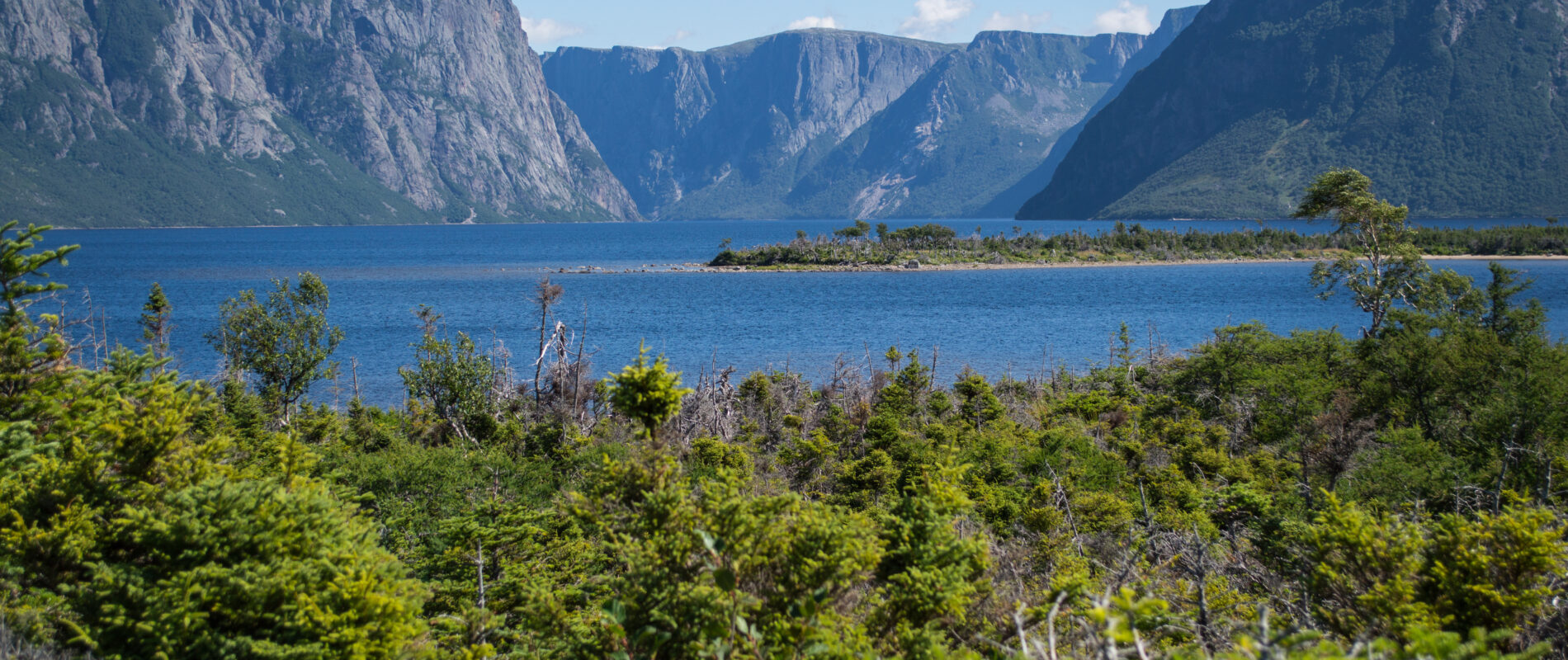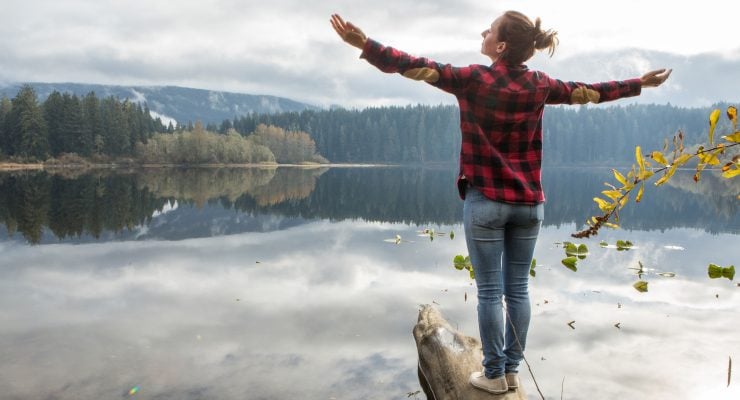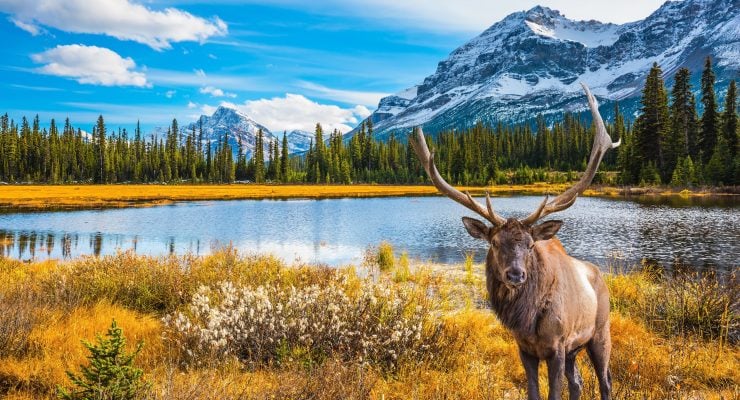I recently got back from a trip to the spectacular Gros Morne National Park. Out of everywhere I’ve travelled during my working holiday, Gros Morne has fast become one of my favourite spots in Canada (just behind the Rockies). If you haven’t yet made plans to visit Gros Morne, now is the time! Here’s a detailed guide containing everything I learned from my trip, which you can use to perfect your own Gros Morne itinerary.
What is Gros Morne National Park?
For the uninitiated who have never heard of Gros Morne, we’re talking about Newfoundland’s best and biggest national park. Gros Morne is located on the west coast of the island (the other national park, Terra Nova, can be found further east). As well as Gros Morne Mountain, the park is defined by its rugged coastline, glacial fjords, and the Tablelands (an outcrop of the Earth’s mantle).
How to get there
It takes a lot of time and effort to reach Gros Morne, but it is worth the trek. There are two ways to get there, both with pros and cons.
- Fly to Newfoundland and rent a car on the island: This option can be the faster of the two, but is more expensive. Most travellers coming by plane will fly into the capital, St John’s, where you will then be faced with a 7-hour drive west. To cut down your driving time, you can fly to Gander or Deer Lake, which are closer. However, these smaller airports are more expensive and there aren’t many affordable rental cars.
- Drive from mainland Canada to North Sydney, NS, and take the ferry: The Marine Atlantic ferry crossing is cheaper than the average flight to Newfoundland, but this option will take longer. Whether you’re coming from Quebec, Nova Scotia or an even further away province, you’ll have a long drive to the North Sydney ferry terminal. Then, the shortest ferry crossing is 7 hours. Finally, it’s a 4-hour drive from Channel-Port aux Basques (the closest ferry terminal) to Gros Morne.
No matter which option you choose, make sure you build flexibility into your schedule. Flights to eastern Canada are notorious for changes and cancellations. Equally, the ferry can become delayed if the weather is too dangerous for sailing.
I picked up a rental car in Halifax, NS, using the pvtistes.net deal with Thrifty. I use this deal whenever I road trip through Canada and get great savings, so make sure you
check out our deal when planning your travels!
The journey there was reasonably smooth and took 3 days door-to-door (I drove to North Sydney via the Cabot Trail, which added on time, but was worth the detour!). On the way back, I got caught up in thunderstorms and weather warnings, and it took 4 days of travel with various delays and cancellations.
How long to stay
I stayed for 5 days and found this to be the perfect amount of time, given the weather. A few days were too rainy to go on any hikes, so I ultimately did my activities across 3 days, but I’m glad I had the extra days built in for flexibility. If you’re not interested in hiking, you only need 2-3 days in the park (tips further down for non-hikers!). If you want to tackle some of the longer hikes (that are weather-dependent), consider staying for a minimum of 5-7 days.
Where to stay
I chose to base myself in Rocky Harbour to be nearer Western Brook Pond. This section of the park is also where you’ll find the Gros Mountain summit climb, Lobster Cover Head Lighthouse, and Norris Point.
The other main option is Woody Point, which is the hub for the section of the park where you’ll find the Tablelands trail, the Lookout Hills hike, Green Gardens, and Bonne Bay. You might prefer to split your stay and spend a couple of nights in each section of the park.
Some travellers will stay further out in Deer Lake. The benefits of staying here are cheaper accommodation and a more lively town for going out. However, you will have a minimum 1-hour drive to either side of the park, so be prepared for long days!
When to go
The best time of year to travel to Newfoundland in general is in the summer months. June to August will have the best weather, but the shoulder months of May and September can also be mild, depending on the year. I chose the first week of July and the weather was still variable, with some days being very wet and cold, and others being sunny and 20 °C. No matter when you decide to go, be prepared for rain and changeable weather, especially when heading out to the mountains or fjords.
The Western Brook Pond boat tour is one of the highlights of the park and shouldn’t be missed; the tours only run from mid-May to mid-October, so you will want to factor this into your planning. You might want to consider May or June if you want to combine your trip with another Newfoundland bucket list activity, seeing icebergs, either by heading north to St Anthony or east to Twillingate.
The best hikes
The main reason to come to Gros Morne is to hike. If you only have time for one trail, prioritise the Tablelands. This hike is easy to complete and it’s a unique experience. This is your chance to walk on a section of the Earth’s mantle, which is normally hidden far below the Earth’s crust.
More experienced hikers will want to spend a day (6-8 hour return) climbing the summit of Gros Morne Mountain. If you want panoramic views of the park but aren’t experienced enough for the mountain climb, tackle the slightly less difficult Lookout Hills trail. Other popular hikes include the Green Gardens trail or the Coastal trail.
In total, I did:
- Tablelands: My favourite hike, would definitely recommend to all abilities; it’s like nothing else you’ll experience in Canada.
- Lookout Hills: Nice views at the top but a boring and painful uphill climb to get there; one and done for me. The Discovery Centre has a viewing platform that gives you a similar view; while not quite as good as the scenery you can see at the top of the trail, it’s a decent alternative for anyone who doesn’t want to climb uphill for an hour straight.
- Coastal trail: Lovely way to stretch the legs along the coast, flat and easy, but the views are no different to what you see elsewhere in the park, so skip it if you’re short on time.
- Berry Head Pond: A pleasant walk around a pond but nothing new. I went when I was bored of being cooped up from rain; definitely don’t worry about fitting in this one if you’re not in the area with time to kill!
- Western Brook Pond: This walk is only worth it to get to the boat (more on the boat tour below!). Skip this one if the boats aren’t running; you can use the scenic viewpoint at the parking lot to get an idea of the view and save yourself the walk.

Top things to do (for the non-hikers)
Even if you’re not a hiker, Gros Morne is well worth a visit. Most of the tourists in Gros Morne are much older than the average working holiday maker, so expect plenty of accessible alternatives and easy-to-reach scenic viewpoints.
- Western Brook Pond boat tour: The only way to truly see the fjords of Western Brook Pond is by taking a paid boat tour. Though the tour itself is not the best I’ve ever been on (get there early because they overcrowd the boats, so you won’t be able to see anything if you board last!), I still recommend it because the fjords are a must-see. Similar to fjords in Norway, New Zealand, or Alaska, you can expect powerful waterfalls, ancient cliffs, and the possibility of seeing wildlife (I didn’t get lucky, but many people have reported seeing bald eagles on this tour, and it’s also known to have caribou in the area!).
- Lobster Cover Head Lighthouse: Come to watch the sunset over Rocky Harbour, walk the short trails, or look around the historic museum inside the lighthouse.
- Norris Point: Head to Jenniex House Municipal Heritage Building for the scenic views or the heritage museum, then down to the waterfront to learn more about local marine life at the Bonne Bay Marine Station research and teaching facility.
- Bonne Bay: You can take a scenic passenger ferry across the waters of Bonne Bay (travels between Norris Point and Woody Point in 15 minutes) or admire the bay from land at the Bonne Bay Lookout observation deck.
- Scenic drive: Along the road that connects the two sides of the park are numerous places to pull in and admire the view, no walking required!
How much to budget
Although Newfoundland in general is an expensive province to visit, it is still possible to do Gros Morne on a budget.
- Transport: The main cost you’ll need to allow for is getting to Gros Morne. For example, I paid around CA$500 for a week’s car hire, $315 for my return ferry crossing, and filled up at least $100 of gas. That’s almost $1,000 before you’ve even arrived!
- Accommodation: If you’re comfortable camping with basic facilities, there are Parks Canada campsites that cost around $30-40 per night. If not, your next cheapest option is a hostel, such as the Out East Adventures Hostel (bed in a dorm for $40, and they also run guided tours to Gros Morne Mountain!). I decided on a private cabin in Rocky Harbour and spent around $150 per night, because my hostelling days are behind me, but there were certainly cheaper options available for those willing to rough it.
- Parks pass: At the time of visiting, entry to Parks Canada national parks is free! Normally, you need to budget for a park pass for each day you spend in Gros Morne ($11 per adult per day).
- Food: To save money, I bought as much dried food as I could in Nova Scotia, where the supermarkets are cheaper. I then stopped in Deer Lake to get any fresh items I needed, as once you get into the park, choices for shopping are limited. I spent around $150 for my week’s groceries. I didn’t eat out much but when I did, prices were around $20 for a basic meal and $35 for a fancier restaurant. I don’t drink alcohol when I’m travelling solo, but you’ll want to add more to your daily budget if you plan to sample any of the local beers and wine.
- Miscellaneous: You’ll want to allow at least $100 for outings like the boat tour, local museums, etc. Plus, you can, of course, buy merchandise from the gift shops in the national park visitor centre and in the local towns!
Final tips
Here are some final things to be aware of so you can have a stress-free getaway to Gros Morne:
- Watch out for moose. Most locals advise you to stay off the roads at night because of the high chance you’ll find a moose in the road. To avoid driving at night, I stayed overnight in Channel-Port aux Basques and drove to the park the next day. You may need to plan your arrival carefully to avoid nighttime driving.
- Check the weather conditions and pack accordingly. Even if it’s warm and dry on the ground, it might be raining, windy, and freezing cold at the top of Gros Morne Mountain. Challenging hikes should only be attempted when the weather conditions are clear, and don’t be afraid to turn back if conditions start to worsen while on the trails.
- Make sure you’re prepared for the wilderness by reading Essential safety tips for the great outdoors in Canada. Gros Morne is remote and you won’t always have phone signal or other people around to help you in the event of an emergency.
- Prepare to fall in love with Newfoundland! Don’t be surprised if, like me, you find yourself counting down the days for your next trip to Newfoundland after you’ve seen how breathtaking Gros Morne is.


















0 comments
{{like.username}}
Loading...
Load more